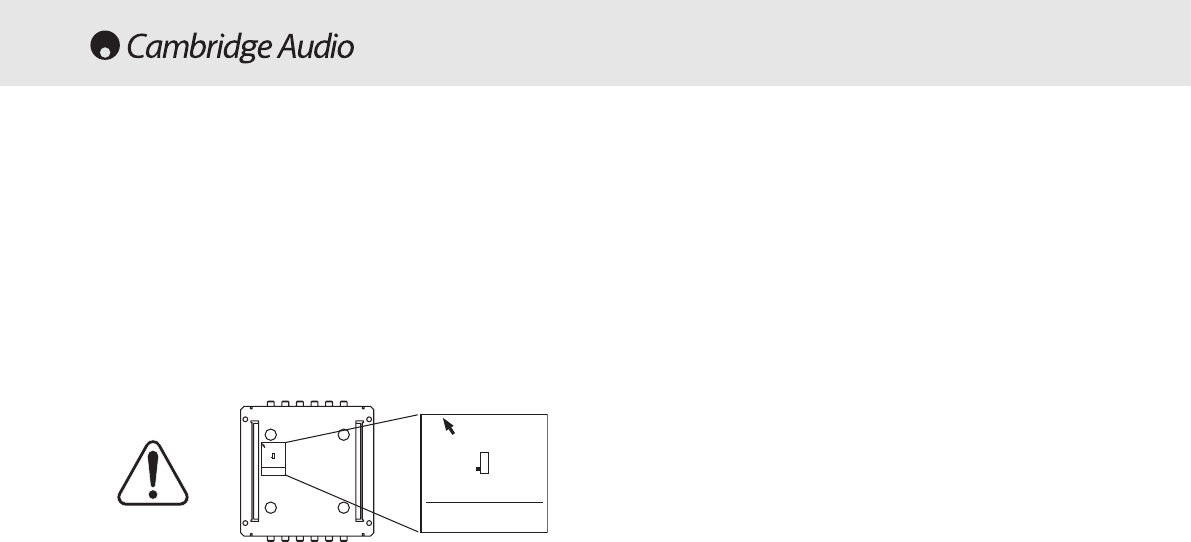
16 Incognito multi-room
Cambridge Audio
Enhanced A-BUS
Standard A-BUS
Mode Switch
See User Guide for details
AUDIO INPUTS FROM SOURCES
AUDIO LOOP OUTPUT - CONNECT SOURCES OTHER END
Cambridge Audio
Enhanced A-BUS
Standard A-BUS
Mode Switch
See User Guide for details
Please read these notes before commencing installation.
AH10 AA-BBUS audio hhub
A-BUS is a standard that allows some compatibility between
different manufacturers A-BUS multi-room products. The AH10 can
be switched between Incognito A-BUS or standard A-BUS mode. The
Incognito A-BUS position is for use with our own Incognito KP10
keypad and gives extra functions. When used with other manufac-
turers A-BUS keypads it should be set to standard A-BUS or they will
not work. The switch is located on the rear of the AH10 (see below).
Fix to a hard surface such as a cupboard surface, not to carpet or a
soft-lined surface, as this will inhibit airflow through the unit. Do not
situate in close proximity to any installation which will produce
excessive electrical noise such as dimmer racks etc (these may
interfere with the unit). Situate within three metres of a power socket.
VH10 vvideo hhub
Locate in close proximity to the AH10 (maximum of five metres away).
Fix to a hard surface such as a cupboard surface, not to carpet or a
soft-lined surface, as this will inhibit airflow through the unit.
Do not situate in close proximity to any installation which will
produce excessive electrical noise such as dimmer racks etc; these
may interfere with the unit.
Wiring tto zzones
Run a Cat-5e cable from the AH10 to each wall control unit.
Fit a single-gang back box for each KP10.
Run two standard speaker cables from the KP10 to mounted
loudspeakers. If video is required, run CT100/RG6 high-quality co-
axial cable from the VH10 main zone connection either directly to
the video display, or to a wall-mounted panel fitted with a suitable
phono/RCA connector.
Cabling ttips
Cat5e cable should be run through the installation in electrical conduit,
either metal, non-metallic, rigid or intermediate, wherever possible.
Should conduit not be available or impractical, cabling running through
frames or beams must be a minimum of 25mm/1inch from the
nearest edge of that structure. If the frame or beam is metallic, then
the cable should be protected by a bush or grommet.
When routing cables around the installation, care must be taken to
prevent kinking and trapping. Any cable ties used must not be
tightened any more than is necessary to hold the cable in place.
Always re-check the colour code of the Cat5e cable connections to
ensure they are correct.
PRE-INSTALLATION NOTES
Important!


















